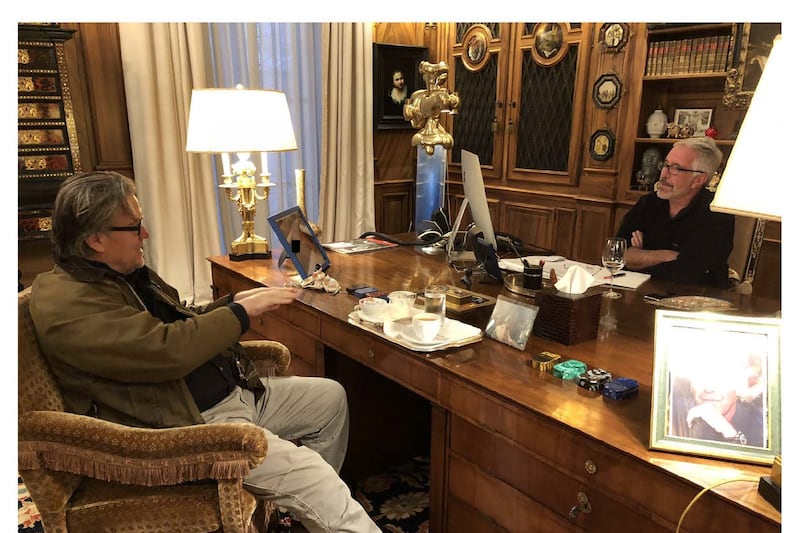The dark evenings of December mark out the island with quite different patterns of life.
Between the cities the motorways are rivers of silvery, searching beams. They intersect the countryside with new imperatives of time and space. The lives they rush by are walled off to quadrants of dark, anonymous fields and a scatter of bungalow windows, all glowing with some jewelled hieroglyph of Christmas. The old local roads they inhabit, twisting and ivied, have more sense of humanity’s spread, of being on the way from here to there. The world’s new ambition is to be everywhere at once.
It’s getting on for a century since the farmers on our hillside put out cartloads of stones from their land and watched them ground down to gravel by Mayo County Council’s crushing machine. In this way, the last few miles of the road south from Louisburgh, then little more than a dusty boreen, were widened and surfaced and tarred to the foot of the mountain.
Further tendrils of byroad and boreen have been surfaced since then – one, to the sea, with an absurd speed warning of 50km/h. And finally, the Wild Atlantic Way has brought new, velvety surfaces, swift pothole repair, and new road signs with emblematic, fluorescent zigzags that dazzle drivers at night.
In my bicycling years, I once took a few weeks to trundle right around Ireland, keeping to minor roads where I could on an anti-clockwise progression.
Endless tracts of hawthorn hedge and field gate lacked rootedness or identity
Growing up in Sussex, I had taken for granted a countryside physically rich in the layering of the past, much of it fondly conserved: real Tudor beams, clay tiles, flint walls, dew ponds, field paths and stiles. Cycling round Ireland, so much of what ought to have been “history” seemed to have been disowned, and for long stretches of the landscape the centuries had passed without leaving any vernacular mark. Endless tracts of hawthorn hedge and field gate lacked rootedness or identity.
All this may be changing with Fáilte Ireland's inventions of the Wild Atlantic Way, Ireland's Ancient East and Ireland's Hidden Heartlands and the remarkable 44 "national waymarked trails" (listed at irishtrails.ie). They challenge local communities to make the best of the dense weave of waysides.
In the meantime, a Christmas browse of The Little Roads of Ireland (Mentor Books, €17) may intrigue as to "where they might lead you and what you might find there". This is the work of much-travelled photojournalist David Rice, compiled over three decades of wandering, in Ireland, "the roads to God-knows-where".
Their attractions are not the usual holy ruins, ancient monuments or geological spectaculars (though one shot of Sligo’s Benbulben draws a gasp), but rather glimpses and revelations framed by hedges and tunnels of trees and along the intimate rise and fall of back roads with grass down the middle.
Rice directs the eye to wayside textures and colours: lichens on old stone, the filigree of ferns and fields. He looks up to storms, rainbows and sunsets, collects old gates and Paul Henry clouds. He captures the natural domesticity of an untidy but beautiful Ireland.
Just raise your arm with an imaginary stick, take a step forward and the doggie will run yelping back
He is also, perhaps inordinately, indulgent to the dogs (or “doggies”, as he insists), who are indeed “the denizens of the little roads”; he has them on almost every page. On my cycle tour of Ireland, their explosive assaults, rocketing through farm gates to snap at my ankles, was a frequent and shocking hazard.
“If one is not friendly,” Rice warns the walker, “just raise your arm with an imaginary stick, take a step forward and the doggie will run yelping back through the gateway”. Carrying a real stick might be even better.
The year brought another absorbing tale of exploration, of Irish landscapes where particularly elusive birds may or may not be found. For lifelong birdwatcher Conor W O’Brien there were a dozen he’d never seen – a most reasonable list, including cuckoo and barn owl, but also the great skua, goosander, ring ouzel and jack snipe – species that would need an effort and a lot of luck.
Ranging out from Dublin by bus and train, O’Brien’s Ireland Through Birds (Merrion Press, €16.95) relates journeys that were not always fruitful: no ouzels, after all, in Kerry’s Gap of Dunloe, or even jack snipe on Dublin’s North Bull Island. But those that succeeded – to skuas nesting on Inishturk and corncrakes on Tory – brought pleasure that only birders know.
Did we need another bird book about Ireland? There’s certainly room for one so often beautifully written. O’Brien has carved out a fresh and personal niche with a travelogue as intriguing about places as about the birds themselves.

















